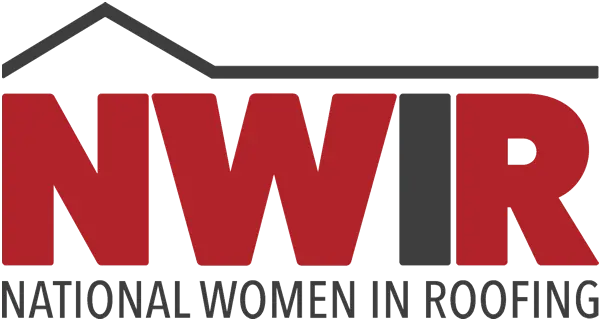What is Roof Blistering on a Shingle Roof?

Roof blistering is one of those problems most people only notice when the damage is done. You see bubbles on your shingles and think it’s nothing serious. Maybe you ignore it because the rest of the roof looks fine. That choice can end up costing you. In this article, we’ll explain what blistering shingles are, why they happen, how to spot them, and what to do about them. We’ll keep it simple and honest. No sales talk, no grand promises. Just straightforward information to help you protect your home.
What Is Roof Blistering?
Roof blistering is small bubbles or raised areas that form on the surface. These bubbles can be filled with trapped moisture or air. They are usually a sign that the shingle layers aren’t sticking together as they should. Blisters can appear on different types of roofs, but they’re especially common on a shingle roof.
A shingle blister starts small. It might look like a tiny bump you barely notice. Over time, it can grow. Big blisters can cause the material to separate from the roof deck. That separation lets water in. Left alone, this can lead to leaks and structural damage. Smaller blisters might not be an immediate emergency, but they weaken the roof and shorten its life.
The Main Causes of Shingle Blistering
Blistering shingles usually develop for a few simple reasons. Understanding the cause helps you fix the problem and prevent it from happening again.
Trapped Moisture or Manufacturing Defects
Sometimes moisture gets trapped inside the shingle during manufacturing. When the sun heats the roof, the water turns to steam and makes a bubble. Modern manufacturing is much better than it used to be, so this cause is less common now. Still, it happens sometimes, especially with cheaper products.
Improper Installation
Another common cause is poor workmanship during installation. If the adhesive isn’t applied properly or the shingles aren’t nailed correctly, they don’t bond tightly to the roof deck. Gaps allow air or moisture to get in, creating blisters. Sometimes contractors cut corners to save time or money. That’s why choosing a licensed, experienced roofer is so important.
Bad Ventilation
Your attic needs airflow. Without good ventilation, heat builds up. Hot air and humidity in the attic can heat the underside of the roof and cause shingles to blister. Poor ventilation also encourages mold and raises your air‑conditioning bills. In Florida’s warm, humid climate, ventilation problems are very common.
Moisture Accumulation and Leaks
Blistering sometimes appears because there’s already a leak. Water can get trapped between shingle layers due to poor drainage, bad flashing, or condensation. As the sun warms the roof, that trapped water turns to steam and lifts the shingle surface. Hurricane rains and high humidity in Southwest Florida can make this worse.
Temperature Fluctuations and UV Exposure
Our summer heat isn’t just uncomfortable. It can cause roof materials to expand. When night falls, they contract. This repeated expansion and contraction stresses shingles. Over time that stress can cause blistering. UV radiation also wears away the protective coating on shingles.
Age and Wear
Even a well‑installed roof gets old. As shingles approach the end of their lifespan they lose flexibility and granules. Older roofs are more likely to develop blisters. If you see blisters on a roof that’s near the end of its life, you may want to talk to a professional about replacement instead of repair.
How to Identify Blistering on Roof Shingles?
The signs of shingle blistering are easy to overlook until they get severe. Here are the most common things to watch for:
- Raised patches – Little bumps or bubbles on the shingle surface. They may look like blisters on the skin.
- Water spots inside – Stains on ceilings or walls can mean water is getting in through popped blisters.
- Higher energy bills – Damaged shingles don’t insulate as well, which raises heating and cooling costs.
- Light in the attic – If daylight shines through gaps in your roof deck, there may be damage from blistering.
- Moss or discoloration – Moss or dark streaks on the roof suggest trapped moisture and potential blisters.
If you see any of these signs, it’s a good idea to get a professional inspection. Blisters are easier to fix when they’re small. You can also climb a ladder to look at your shingles, but be careful. Walking on a blistered roof can pop the blisters and do more harm.
Why Blistering Matters?
It’s easy to dismiss blistering as a cosmetic issue. Sometimes that’s true. If the blisters haven’t popped and the granules are intact, they may not cause leaks right away. But that doesn’t mean you should ignore them. Here’s why roof blisters matter:
- They shorten the roof’s life – A blister stretches the shingle and breaks down the protective granules. That speeds up wear and shortens the roof’s lifespan.
- Popped blisters lead to leaks – When a blister pops, the underlying asphalt loses its granules and is exposed to sun and rain. That bare spot can let water in..
- They hide other problems – Blistering can be a sign of moisture build‑up or poor ventilation. Those problems can lead to mold or rot if left untreated.
- Insurance may not cover it – Manufacturers and insurers often don’t cover blistering unless it has caused a leak. Catching and fixing it early keeps costs lower.
In short, unpopped blisters may seem small. But they can turn into bigger issues. Repairing them early can save you money and protect your home.
Roof Blistering vs. Hail Damage
Sometimes people confuse blistering with hail damage. Both involve surface defects, but they aren’t the same.
- Pattern – Blisters show up randomly, while hail damage usually follows a pattern based on wind direction.
- Granule loss – Popped blisters have missing granules and leave bare asphalt, but hail dents typically still have some granules.
- Unpopped blisters – If you see unpopped bubbles on the shingles, it’s blistering. Hail damage won’t leave raised bubbles.
- Side or slope – Hail often affects one slope or one side of the roof more than another. Blistering tends to be scattered.
Not sure what you’re looking at? Call a trusted roofer. At King Roofing, we offer free inspections and can tell you if you’re dealing with hail, blisters, or something else.
Preventing Blistering on Roof Shingles
There’s a lot you can do to reduce the risk of blistering on your roof. Many of these steps are simple maintenance tasks.
Schedule Regular Inspections
Regular inspections catch problems early. You can visually check from the ground for raised spots or missing granules. A professional should inspect your roof at least once a year. Inspections also include checking attic ventilation and moisture levels. The article from O’Connor Roofing suggests scheduling inspections to identify issues before they become major problems.
Ensure Proper Ventilation
Ventilation keeps hot air from building up in the attic. Without it, your roof gets too hot and shingles blister. Ventilation means having intake vents near the eaves and exhaust vents near the ridge. On older roofs, adding ridge vents or more soffit vents can make a huge difference. King Roofing can evaluate your home and recommend changes if necessary.
Use Quality Materials and Installation
Quality shingles are less likely to blister than cheaper ones. When you replace your roof, ask about products with good warranties. Also, make sure your contractor uses proper techniques and doesn’t rush the job. Poor installation is a major cause of blistering. King Roofing has been installing roofs in Naples since 1979 and offers a 5‑year transferable workmanship warranty on every new roof, so you know the job will be done right.
Keep the Roof Dry
Moisture is an enemy of shingles. Make sure gutters and downspouts stay clear so water drains quickly. Trim tree branches away from the roof so leaves and debris don’t accumulate. If you store shingles or other roofing materials, keep them in a dry place. When the roof is kept dry, moisture can’t get trapped under the shingles and cause blisters.
Routine Cleaning and Debris Removal
Remove twigs, pine cones, and other debris that collect on the roof. Falling branches or people walking on the roof can pop blisters. If you have overhanging trees, consider trimming them back. Regular cleaning keeps the roof surface clear and reduces the risk of damage.
Control Temperature Extremes
While you can’t control Florida’s weather, you can choose shingles that handle heat better. Some products have reflective surfaces that help keep the roof cooler. Shade from trees or pergolas can also lower temperatures. Avoid adding dark coatings that absorb more heat.
Choose a Licensed, Insured Contractor
In Florida, roofing contractors must hold a state license. They should also carry workers’ compensation and general liability insurance. Hiring a properly licensed contractor ensures the job meets building codes and reduces the risk of improper installation. King Roofing is fully licensed and insured, and we can provide proof of credentials upon request.
Repairing Blisters: DIY or Call a Pro?
If you notice a few small blisters, you might be tempted to fix them yourself. However, as roofing professionals, we do not recommend any DIY projects. DIY projects can put you in a dangerous situation where a small mistake can make you pay a high price. King Roofing can inspect your roof for free, recommend the right solution, and estimate costs.
King Roofing: Experience You Can Trust
Blistering shingles aren’t something you want to ignore, but dealing with them doesn’t have to be stressful. King Roofing Service Inc. has been serving homeowners in Naples and Southwest Florida since 1979. Over the last four decades, we’ve seen every kind of roof problem, blistering, storm damage, leaks, and more. We’ve built our reputation on quality workmanship and customer service.
Here’s what sets us apart:
- Free inspections and estimates – We’ll inspect your roof and explain what we find. There’s no charge and no obligation.
- Free Roof Estimate Calculator – Use our online tool to get an instant estimate for repairs or replacement.
- Licensed and insured – We hold all required Florida licenses and carry full insurance.
- 5‑Year transferable workmanship warranty – Every new roof we install comes with a five‑year workmanship warranty for your peace of mind.
- Local experience – We understand Florida’s heat, storm, and building codes. That knowledge helps us prevent and fix issues like shingle blistering.
If you suspect blistering on your roof, give us a call. We’ll tell you what’s happening and offer honest guidance. Sometimes a small repair is all you need. Other times, replacement is a better investment. Our goal is to protect your home and keep you informed.
Frequently Asked Questions About Blistering on Roof Shingles
What causes blistering on roof shingles?
Trapped moisture, poor installation, inadequate ventilation, temperature swings, and old age can all cause blisters. Sometimes manufacturing defects are involved, though that’s less common now.
Are blistering shingles dangerous?
Unpopped blisters are often just a cosmetic issue. But popped blisters expose the asphalt, leading to leaks and shortened roof life. It’s wise to have them checked.
How can I tell if it’s blisters or hail damage?
Look for raised bubbles (blisters) versus round dents (hail). Blisters are random; hail damage is more uniform. If unsure, get a professional opinion.
Do I need to replace the whole roof because of blistering?
Not always. A few small blisters can often be repaired. Widespread blisters or blisters on an old roof may signal that replacement is the better long‑term solution.
How much does it cost to fix blistering shingles?
Repair costs vary depending on the size and number of blisters. One estimate is between $100 and $1,000 per blister, with an average around $550. King Roofing can provide a detailed quote.
Can I prevent blistering on my new roof?
Yes. Choose quality shingles, hire licensed installers, make sure your attic is well ventilated, and keep gutters clean. Regular maintenance helps too.
Does homeowner’s insurance cover blistering shingles?
Coverage varies. Insurance often doesn’t cover blisters unless they lead to a leak. It’s best to ask your insurer and read your policy carefully.
How long do asphalt shingles last in Florida?
With proper installation and maintenance, architectural shingles can last 15 to 30 years. Florida’s heat and storms can shorten that. Regular inspections help you track wear and plan for replacement before problems arise.
Do I need a professional inspection?
Yes, it’s a good idea. Professionals can spot issues you may miss and know the difference between cosmetic and serious problems. King Roofing offers free inspections, so there’s no reason not to get an expert opinion.
Don’t Ignore Roof Blisters!
Blistering on roof shingles isn’t the end of the world, but it’s not something to ignore. Those little bubbles can hint at bigger problems like poor ventilation, moisture buildup, or installation mistakes. They weaken shingles and can lead to leaks. The good news is that early detection and care make a big difference. Simple actions like keeping your attic cool, choosing quality shingles, and hiring a licensed contractor help prevent blisters from forming.
If you live in Naples or anywhere in Southwest Florida and you think your roof has blisters, King Roofing is here to help. With over 45 years of experience, we know how to deal with blistering shingles the right way. Our team is fully licensed and insured, and we back every new roof with a five‑year workmanship warranty. You can even get a ballpark estimate right now using our free roof estimate calculator on our website.
Give us a call at 239-592-3044 or schedule a free inspection. We’ll explain what’s happening on your roof, answer your questions, and help you decide on the best next step. Protect your home and your peace of mind today.












